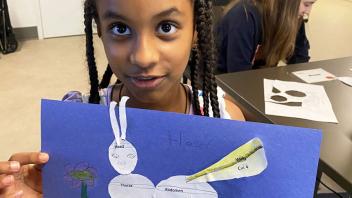
The busy lives of insects are always fascinating to observe. Who hasn’t marveled at the proverbial busy bee or the ant and its wise ways? Watching our six-legged friends over the past summer has given me tremendous insight into how much we have in common with insects. But it has also been equally interesting to see just how busy bugs can keep humans!
When the team at Reading Rockets and Start with a Book provided resources and trained educators from Affordable Homes & Communities (AHC) in Arlington, we knew we’d be hearing some amazing things about how they put Bug Buddies into action.

AHC develops affordable housing and provides a wide array of educational programs and social services, including a Summer Camp program. AHC Resident Engagement Specialists from the summer programs at Woodbury Park/Frederick, Harvey Hall, Gates of Ballston, Virginia Gardens, and The Apex all used Start with a Book and Bug Buddies to keep their students busier than bees and help them grow wiser than ants with great books, activities, and new experiences.
They each share below how learning with Bug Buddies impacted their students and enriched their summer!
Bugs in our lives
By Sigrid Edstrom, Resident Engagement Specialist, Education at Woodbury Park/Frederick, AHC Inc.
Each week for Woodbury Park/Frederick’s summer program, Bug Buddies served as an entertaining, fun, and guiding educational tool for the elementary students participating in AHC’s summer programming. Once each week, students participated in a read aloud led by myself or my colleague, Sofia Rios, using the books provided by WETA and Start with a Book.

A book that proved particularly fruitful for classroom discussion and questions was The Book of Brilliant Bugs by Jess French. Though The Brilliant Book of Bugs approached nearly every elementary topic regarding bugs — their habitats, their behaviors, and how they relate to humans — I found the book to be most useful on the day we focused on bugs and their habitats. Students learned from The Book of Brilliant Bugs that bugs do not just live in the ground and in dirt, but all over the earth and in different ecosystems. They discovered how bugs work together to find food and bring it back to others, search for beautiful flowers in a meadow to drink the flowers’ nectar, and even make their way into our classroom!
This inspired my class to go on a “Bug Scavenger Hunt” at our local park in order to search for bugs in everyday places. Students found bugs on trash cans, under rocks, cracks on tree trunks, and in the cracks of our sidewalks.
Bug Buddies opened students’ eyes to the ubiquity of bugs in our everyday lives, gave them the necessary tools to identify how bugs affect their worlds, and built their understanding of the importance of bugs to all of us.
Sharing bug habitats
By Norma Hernandez, Resident Engagement Specialist, Education at Harvey Hall, AHC Inc.
At summer camp at Harvey Hall, our students learned about different bugs, their environments, and what they contribute to our ecosystem. Students took an in-depth look at different insects such as beetles and discovered how many different types there are.
Using their journals to keep track of what they saw on our nature walks, students would write about all the bugs they encountered. Their favorite bugs were crickets, grasshoppers, and butterflies.
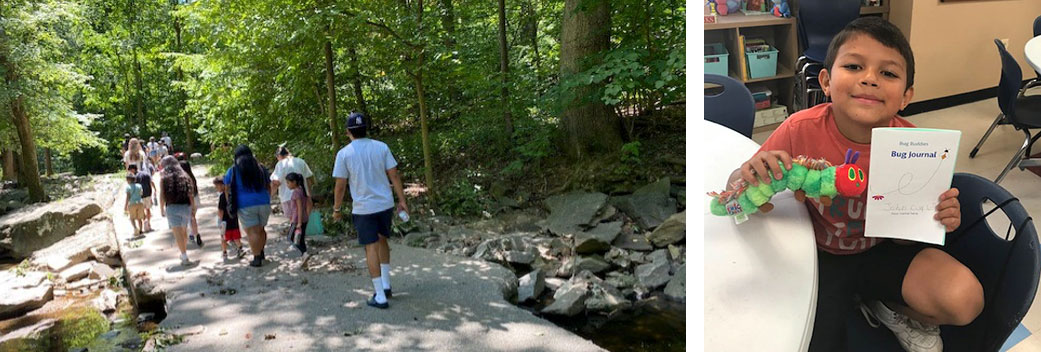
They participated in a scavenger hunt and had a ton of fun looking for different bugs, their habitats, and flowers. They really enjoyed the books that we read about insects, their favorite title being The Book of Brilliant Bugs by Jess French.
Inspired by what they’d read and observed, students created models of insect habitats, and we talked about the things we can do help the environment and keep their habitats clean.
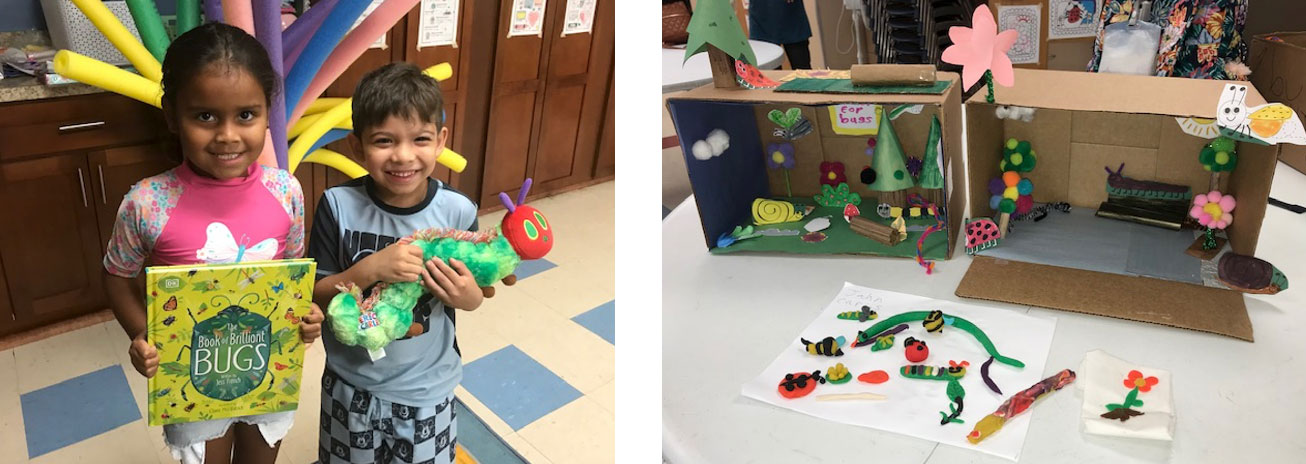
Going wild with bugs
By Seila Santiago, Resident Engagement Specialist, Education at Gates of Ballston, AHC Inc.

My name is Seila Santiago, and I am the Resident Engagement Specialist at Gates of Ballston for AHC. I run the Summer Camp for K-5th grade with 20 students in total. This year the theme of our camp was Where the Wild Things Are. To supplement our theme, I chose to use activities from Start with a Book because I’ve always found awesome activities there. The “bugs” theme of the new toolkit fit perfectly with ours.
My students really enjoyed learning about the different bugs and parts of a bug . They enjoyed going on scavenger hunts looking for bugs that we learned about. They enjoyed creating their own bugs on paper but also with clay. I will continue to use the lessons in the toolkit and look forward to future activities from Start with a Book.
Tasty bugs
By Nighat Rana and Mahvash Zahid, Resident Engagement Specialists, Education at Virginia Gardens, AHC Inc.
We kicked off summer camp with students at AHC’s Virginia Gardens by talking about our theme: bugs! We started with a read aloud book, Creep, Leap, Crunch! by Jody Jensen Shaffer, then did an interactive activity with the students called “Let’s Eat!” to get them engaged and excited.
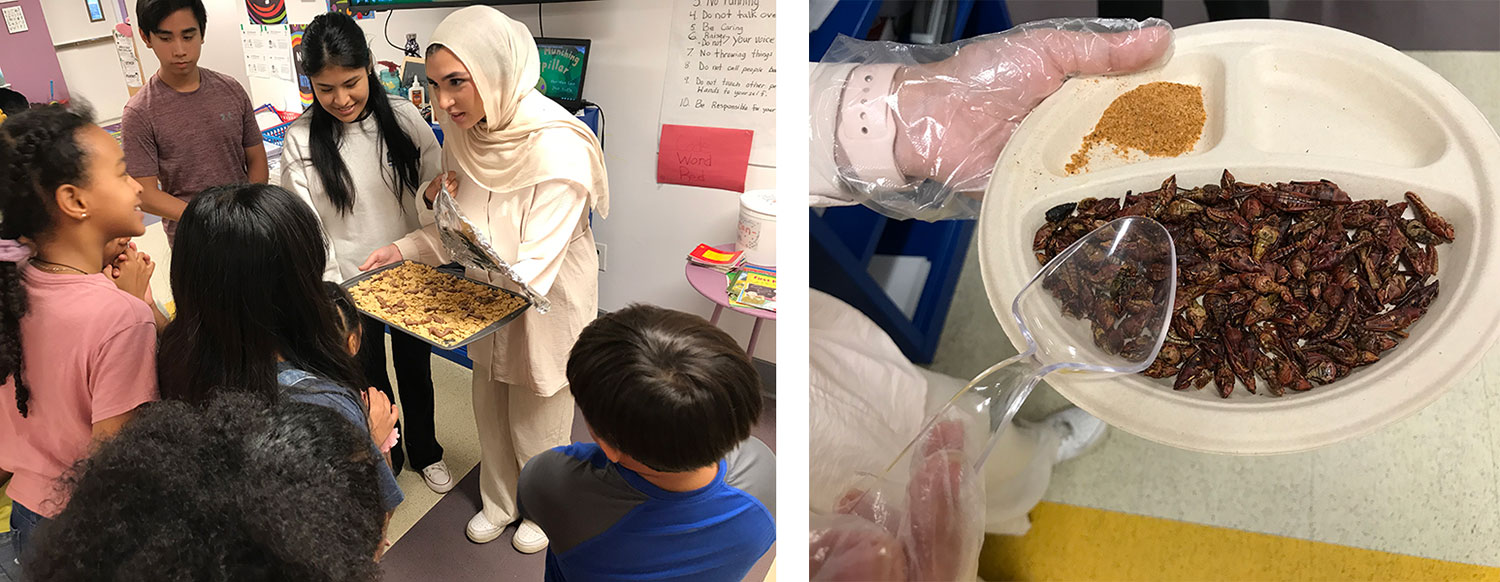
We started by preparing different bug themed foods. For each round we had the students guess what the food would be. We made sure to cover each item with foil so the students could not see it and then had them gather in a circle to uncover each item. Once they knew what it was, we had them go back to their seats and describe what the item looked like, smelled like, felt like, and how they thought it would taste. We then had them try each item and write down what they thought about it and describe how it tasted.

For the first item we crushed graham crackers to look like dirt and placed chocolate covered caramel worms on top. For the second item we had the students try honey from a honeycomb, most students asked for seconds for both items. Lastly, we had real crickets and a seasoning mix from Mexico made from crushed up worms which we offered to the students. They each got to decide if they wanted to try it. At first, they were hesitant but once they saw one of our volunteers try a bite, they were enthusiastic and almost all of them took at least a taste! They were excited and nervous, so they did a count down and decided to all eat it at the same time.
After they tried their items and answered questions, we had them share their experiences with the group about what they liked, disliked, or were scared to try. It allowed them to share their excitement with their peers and some students even took home crickets to show their families. This was a very good experience for our students and staff members. We got to touch, taste, smell, and describe the food, and all the emotions of social and emotional learning. This project from Start with a Book was so fun that we will do it again!
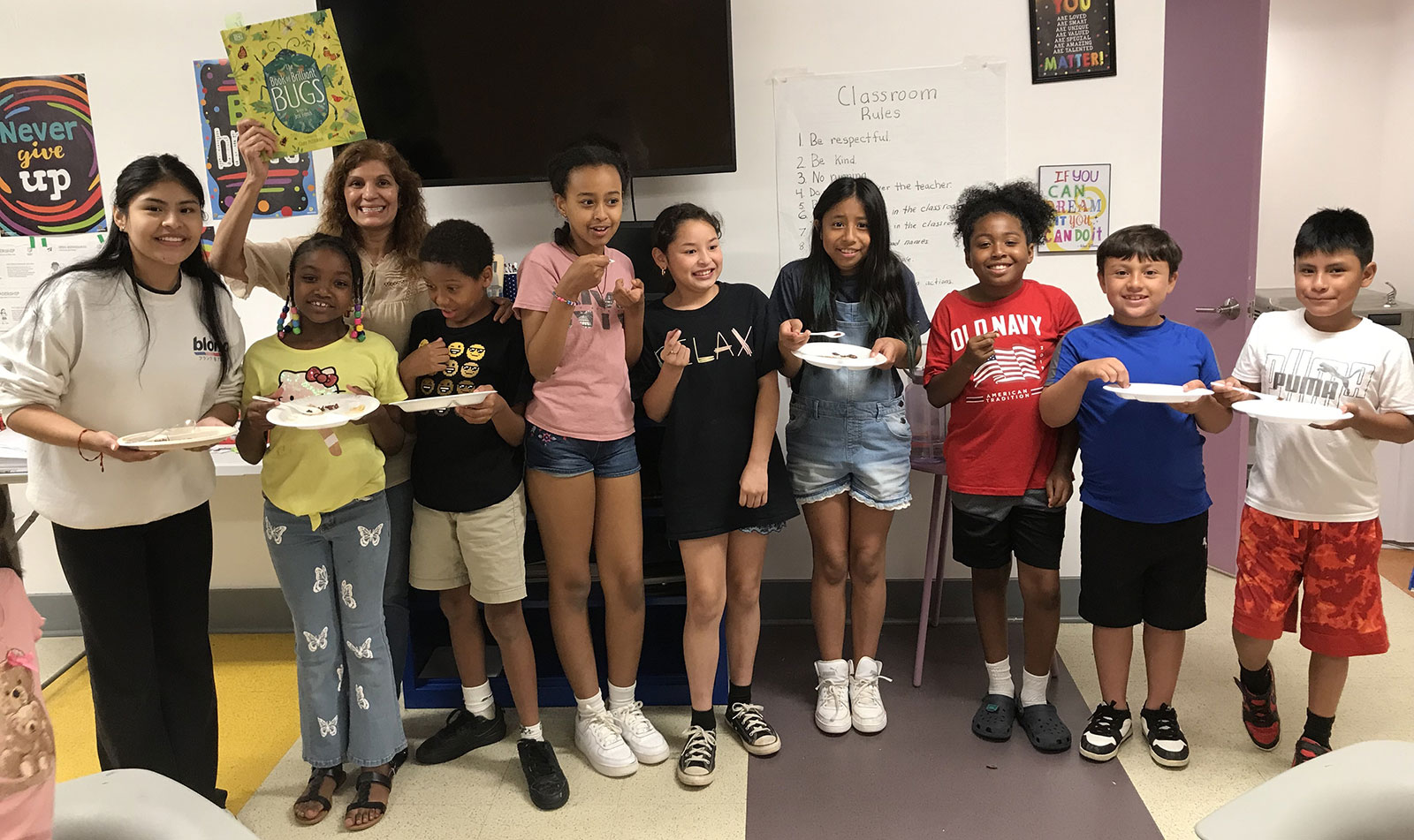
Bug-filled summer
By Isabella Molano, Resident Engagement Specialist, Education at The Apex, AHC Inc.
Over the summer, students at Apex’s Summer Camp had so much fun learning about all sorts of insects and the important role they play in our lives! My name is Isabella Molano, and I’m a Resident Engagement Specialist for AHC at Apex Apartments. AHC provides resident services including education programs, and during the summer we run a six-week summer camp for elementary aged students. Students went on field trips, practiced math and literacy, and had so much fun.

At the beginning of camp, we introduced our theme, and the kids learned the differences between arthropods and insects. By the end of the summer, almost everyone could name the three body parts of an insect (the head, the thorax, and the abdomen)! We had Eyewitness: Insect by DK publishing readily available all summer so the children could look up more bug facts and get more context the more they learned.
Our summer was also filled with fun insect-related crafts. The first one we did was creating a paper plate insect, and these became the backdrop of our classroom for the next few weeks.
We did several activities to help students learn the importance of bees. To start with a book, we read Give Bees a Chance by Bethany Barton. We learned that bees are pollinators and even tried ‘pollinating’ for ourselves with a bee relay race game! It really taught us the importance of teamwork and made us appreciate bees for all their hard work.

At left: pollinating their hives. At right: gathering nectar from a flower.

After reading How to Build an Insect by Roberta Gibson, we let the kids try it out for themselves! At this point they already knew the basic parts of what makes up an insect, so we left the rest up to them. And they got creative with habitats, food, and appearances. This rainbow insect (shown at right) lives on rainbows!
Some other highlights include a bug scavenger hunt, reading about how insects fit into the food chain, and taste-testing our own “bug-related” food. Thanks Start with a Book and Bug Buddies for such a fun-filled and educational summer!
Resources
- Start with a Book: Bug Buddies
- Start with a Book: Bugs
